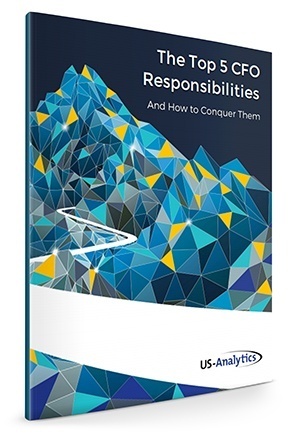KPIs can help assess the health of your business and, ultimately, help CFOs keep track of their three most important goals — keeping track of the past, understanding the present financial situation, and planning for the future.
Besides helping you track performance, KPIs serve to help you see if there are any potential issues and address them before they snowball out of control. In this blog post, we’ll look at the KPIs that CFOs should be watching.
Technology Use
First and foremost, you need to look at the technology your FP&A team is using. Technology use doesn’t seem like a traditional KPI, but it can help explain why you’re having issues with performance. So, technology is an extremely important factor to consider.
Is your team still primarily using manual methods? If that is the case, you must consider automating your processes, not just for productivity but for data consistency and gaining better insights.
Actionable Tip: Consider EPM advisory services to help you choose the tool that will take your processes in the direction you want to go.
If your team is using a solution — is it spread out over several systems? How is your user adoption? Is anyone lagging behind? Taking a close look at your user adoption can help you pinpoint issues and improve performance.
Actionable Tip: Have too many processes spread out over too many systems? Consider implementing a unified EPM solution, like OneStream.
If you’re the CFO of a national or global organization — does your technology help connect your teams? Many global and national organizations share data through manual methods, like emailing spreadsheets. But, with the right EPM solution, you can connect your finance team no matter where each individual is located on the globe.
Actionable Tip: Consider implementing a cloud solution. In the cloud, all of your teams can work in the same solution with the same data. This can make it easier to compare various locations and ensure your data is consistent. Check out Oracle Planning and Budgeting Cloud Service to get started.
Traditional FP&A KPIs
With the right technology, it’s easier for you and your team to track more traditional KPIs. It depends on you and your organization whether you track all of these or just some of them. Below, you’ll find standard KPIs your FP&A team should be tracking.
Working Capital
This is the cash that is immediately available. It’s easily calculated by subtracting your current liabilities from your current assets. This includes assets like on-hand cash, short-term investment, and accounts receivable. This KPI tells you the condition your organization is in to meet short-term financial commitments.
Operating Cash Flow
This KPI gives you insight into the operation side of your business — telling you if your organization is generating enough to sustain the capital investments you’re putting in. You can compare this number to the total capital employed, allowing you to create a ratio that gives you a better picture of your financial health.
Return on Equity
This measures your company’s net income against every unit of shareholder equity. It tells you if your net income is adequate compared to the overall wealth of your business. It’s a measurement of not just your profitability but also your efficiency.
Current Ratio
This KPI compares your assets to your current liabilities, helping you to understand the creditworthiness of your business.
Accounts Receivable Turnover
This KPI shows you the money customers owe your company. Accounts Receivable Turnover can help you determine if payment turnaround is adequate and if you need to optimize the process to increase cash flow and improve your liquidity. Obviously, if you’re not receiving payment on time, it’s a problem that you need to address. It might be something simple like setting up an online payment system or reducing the cost for customers who make payments on time.
Accounts Payable Turnover
This KPI shows the rate your business pays off its suppliers and additional expenses, like rent for your office building. Accounts Payable Turnover helps you understand how much you’re spending on suppliers and could help you make comparisons if you’re assessing new suppliers.







